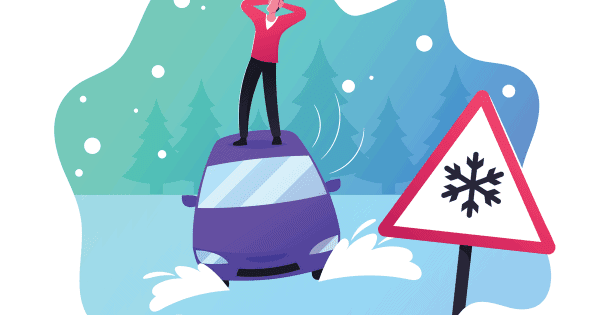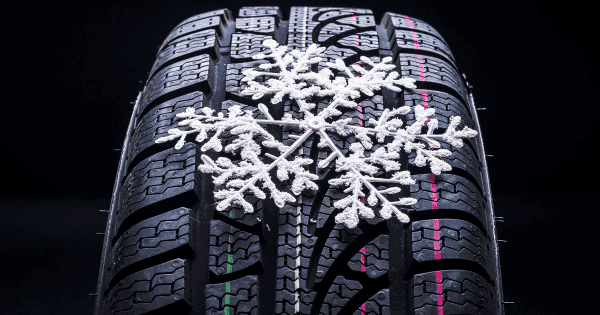- Need Any Help: +1 647-760-5505 or
- info@trubicars.ca
No matter the amount of snow and ice, driving in snowy conditions can make any type of driver, nervous, unsettled, and anxious. Statistics Canada reported that 21.4% of fatal collisions in 2020 were due to environmental factors so learning how to safely navigate your vehicle through winter conditions is an essential skill Canadian drivers must know and be comfortable practicing. It is your duty as a safe and responsible driver to be prepared for any road and weather conditions that may pose a risk to your driving. It’s extremely important to exercise caution, practice safe driving skills, and slow down in winter weather. At Trubicars, we have identified some helpful tips to consider and keep in mind while you are driving in Winter weather conditions so that you can avoid any dangerous situations and prevent collisions.

Before any length of a road trip, be sure to check the weather forecast as it can help you to know what kind of weather you will be driving in. By checking the status of the roads as well, you can gauge which roads will be cleared and which ones you might want to avoid traveling on. Most TV news stations and radio stations will provide drivers with updates on road and weather conditions. If you are ever in doubt, you can always reach out to any friends or family members who drive and ask them about the local road and weather conditions.
By starting your vehicle a few minutes before you drive, you are allowing your car cabin and engine a chance to heat up. Furthermore, pre-heating your vehicle can help melt some of the snow and ice that is on your vehicle that would be tricky to scrape off.
It’s important to clear off any snow and ice that doesn’t melt, so your license plate, mirrors, headlights and taillights, and windshields/windows are visible to other road users and so that you can increase your visibility while driving.
You should always perform a pre-road trip check. This check helps ensure that your vehicle is in safe, proper working order. There are quick checks that you can do such as checking tire pressure, topping up on fluids such as windshield washer fluid and engine oil, checking your head and taillights, indicator lights, and ensuring your horn works. If you are low on any of the above fluids or tire pressure, make sure to safely top them up. If there is ever an issue with your vehicle, and you are left unsure about what your vehicle may need to run safely and smoothly, consider visiting a local trusted mechanic.
In case of a roadside emergency, it’s better to be safe than sorry and ensure you have all the supplies you may need in case you get stranded on the road during harsh weather conditions. Some supplies include (but are not limited to):
Winter tires are specially designed to give your vehicle stronger traction to deal with heavy snow and ice on roads. They also aid in easier braking and help you handle speed, turning corners, and fuel consumption in winter weather. You should also ensure to check your tire pressure frequently as cold weather can deflate your tires.

It’s always good to know how to regain control of your vehicle should you feel your vehicle sliding on snow and/or ice. If you slide due to snow and/or ice build-up on the road, when approaching any kind of turn, slowly begin to press on the brake before you turn your steering wheel. If you feel your vehicle sliding, gently release your foot off the gas pedal and be sure to turn your wheel in the direction you want your vehicle to go. Drivers should also always be aware of the space around them while they are driving. In snowy weather, it is a safer idea to increase the distance between you and the car in front of you so that you can give yourself more time to react and avoid a collision.
Be sure to drive the speed limit (speed limits are put in place for a reason!) and if you don’t feel safe driving at a high speed, click on your hazard lights to let other road users around you know that you are driving at a slower speed due to the inclement road conditions.
Ensure that you give yourself enough time to safely reach your destination when it comes to inclement winter weather. It’s better to leave early and arrive early at your destination than to rush and potentially put yourself or other road users in a dangerous situation while trying to navigate through inclement weather.
While you are driving, regardless of the weather and road conditions, your focus should always be on the road ahead. In winter weather conditions, you must pay extra close attention to the road as there are many more potential hazards that you may come across. By ensuring your focus stays on driving, you are giving yourself more time to safely react to any hazards and avoid any type of collision.

At Trubicars, we recognize and encourage our students to remember that driving is a big responsibility, and it is your duty as an operator of a motorized vehicle to ensure that you remain safe and responsible behind the wheel. No matter the weather or road conditions, it’s imperative that you stay in control of your vehicle and make sure you are practicing safe and responsible driving skills. If you are looking for more information on Tips for Winter Driving, check out the Trubicars website!

 January 3, 2025 by
January 3, 2025 by Trubicars
Trubicars
 February 13, 2024 by
February 13, 2024 by Reema Sharma
Reema Sharma
 January 17, 2024 by
January 17, 2024 by Trubicars
Trubicars
Once you acquire the knowledge provided in
those tests, you are ready to pass the test,
for the first time.
